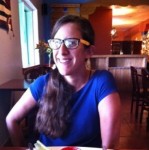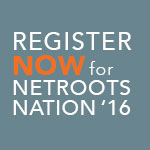After a great run, the Winning the Internet blog has been retired. However, you can still keep in touch with New Media Mentors here.
 As we gear up for Netroots Nation 2013, we’re taking a closer look at some of the convention’s hottest training sessions. We’re interviewing the trainers and taking you inside some of online activism’s most popular and elusive topics.
As we gear up for Netroots Nation 2013, we’re taking a closer look at some of the convention’s hottest training sessions. We’re interviewing the trainers and taking you inside some of online activism’s most popular and elusive topics.
Today we’re interviewing Hallie Montoya Tansey, who’ll be leading Zero-Dollar Targeting.
NN13 Training Session
Zero-Dollar Targeting
Analytics isn’t just for PhDs or campaigns with billion dollar budgets. Using logistic regression in Stata, participants will learn how to make a model that predicts the likelihood that individual voters will support a given candidate or issue.
Interview
Q: Tell us about your experience with targeting and creating predictive models.
A: I got my start in organizing working to strengthen the Ethnic Studies programs at Columbia University when I was a student there. A year after graduating, I worked on my first electoral campaign, Matt Gonzalez for Mayor in San Francisco, and fell in love with electoral politics. I helped found and lead the League of Young Voters, and worked on many more state and local level campaigns in the next few years.
It wasn’t until I was a part of the 2008 Obama campaign’s field leadership that I first used the output of predictive models to make campaign decisions. I was working in Wisconsin, where in the past the lack of party voter registration had been a real obstacle to targeting voters effectively. Using predictive modeling techniques allowed us to find “our voters” in every corner of the state. Where previous statewide Democratic campaigns had opened up field offices only in the traditional Democratic strongholds of Milwaukee and Madison, we opened up over 60 offices, including many in small towns and heavily Republican suburbs. My experience on the 2008 Obama campaign convinced me completely of the power of predictive modeling techniques, adopted at scale, to change the way campaigns are run.
Since then I’ve studied data analytics and learned how to create predictive models at the Haas School of Business at UC Berkeley, and founded a company, The Target Labs, which builds web platforms that make these techniques accessible to state and local-level Democratic and progressive campaigns. The first test of our approach, for Eric Mar’s campaign for Supervisor in San Francisco last fall, resulted in a 13 point margin of victory on Election Day, despite the fact that Eric’s opponent outspent him by a factor of 4 to 1.
Q: How do people commonly use targeting and predictive modeling?
A: Campaigns use targeting and predictive modeling to decide what people to contact with what messages. Traditionally, campaigns made these decisions using big demographic or geographic buckets, rather than fully taking advantage of individual level data. Predictive modeling makes it possible to target voters at the individual level, using a much greater volume of data and making much more accurate predictions. Campaigns can create models that predict the likelihood that voters will behave in a certain way: they they’ll support a given candidate or issue, that they’ll turn out to vote, that they’re persuadable, that they’re reachable on the phone, that they’ll donate, etc. These predictions help campaigns make smart, data-driven decisions about how to target their scarce voter contact resources.
Q: How can folks go about doing this kind of modeling?
A: In the Zero Dollar Targeting workshop, I’ll be teaching participants how to make models that use individual level polling data and voter file data to predict how likely individual voters that you haven’t talked to are to support your candidate or issue. The workshop is designed for people without an extensive background in statistics.
We’ll use a technique called logistic regression to build our model (but don’t let that phrase scare you— software does most of the math for you!). We’ll create the model using a statistical software package called Stata, but if you happen to be familiar with another statistical software, such as SPSS or SAS, you could definitely apply these same concepts there. If you code, there are lots of languages you could use to make models—a great one specifically designed for statistics is R.
Finally, we’ll talk about how campaigns can use the output of these models to make better decisions about which voters to contact with what messages via mail, phone and door-to-door canvassing.
Q: Why should folks attend your session at Netroots Nation, and how can they connect with you?
Here’s some types of Netroots participants who I think would get a lot out of the session:
- State and local level campaign managers and non-profit leaders who want to try using Obama-style data analytics on their own campaigns.
- Field people who want to understand what’s behind the voter scores they work with.
- Data people who haven’t yet built models themselves and want a solid introduction to get them started.
If folks want to connect with me outside the workshop, they can do so through Twitter—I’m @halliemt.
To attend this training, or one of the 39 others at Netroots Nation 2013 in San Jose, register now.




Comments are closed.